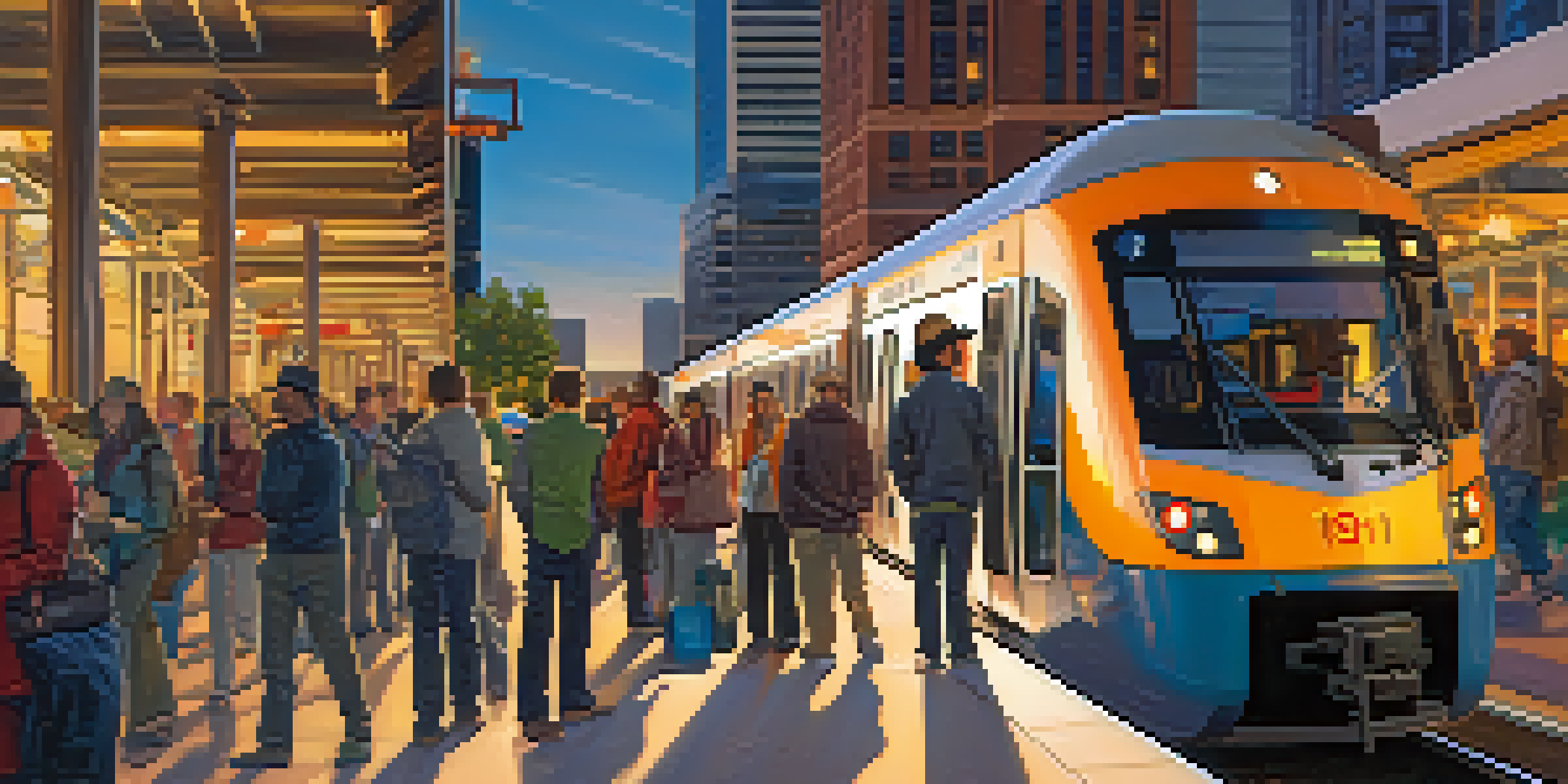Comparing Denver's Light Rail and Bus Services for Commuters

Overview of Denver's Public Transportation Options
Denver boasts a diverse public transportation system that includes both light rail and bus services. Each option caters to different commuting needs, making it essential for residents to understand their choices. The Regional Transportation District (RTD) manages these services, ensuring that they are accessible and efficient for daily commuters.
Understanding the Light Rail System in Denver
The light rail system in Denver is a modern and efficient way to navigate the city. With multiple lines connecting key areas, commuters can easily travel from downtown to various neighborhoods and suburbs. The light rail is particularly beneficial for those looking to avoid traffic congestion and parking hassles.
Diverse Transit Options in Denver
Denver's public transportation system offers flexible options, including light rail and bus services, to cater to various commuting needs.
Benefits of Using Denver's Bus Services
Denver's bus services provide a flexible transportation option that covers a broader range of routes than the light rail. Buses can reach areas that may not be directly accessible by train, making them an excellent choice for many commuters. Additionally, bus services often run more frequently, allowing for greater flexibility in travel times.
Cost Comparison: Light Rail vs. Bus Fares
When it comes to cost, both light rail and bus services offer affordable fare options for commuters. Passengers can choose from single-ride tickets, day passes, or monthly passes depending on their travel frequency. Generally, the fares for both options are comparable, but it’s worth noting that the light rail may have a slightly higher fare for longer distances.
Cost-Effective Travel Choices
Both light rail and bus services provide affordable fare options, making public transport a budget-friendly choice for commuters.
Travel Times: Which Option Is Faster?
Travel times can vary significantly between light rail and bus services, depending on the route and time of day. Light rail often provides faster travel times due to dedicated tracks, especially during peak hours when road traffic is heavy. However, buses may prove quicker for shorter distances or less congested routes.
Accessibility Features of Light Rail and Buses
Both light rail and bus services in Denver prioritize accessibility for all commuters. Light rail stations are equipped with elevators and ramps, ensuring ease of access for individuals with disabilities. Similarly, RTD buses are designed to accommodate wheelchairs and have designated spaces for passengers with mobility challenges.
Accessibility for All Commuters
Denver's transit options prioritize accessibility, featuring facilities and services designed to accommodate individuals with disabilities.
Environmental Impact: Public Transport Choices
Choosing between light rail and bus services also has environmental implications. Both modes of transport are more eco-friendly compared to driving personal vehicles, but light rail typically has a lower carbon footprint per passenger. By opting for public transportation, commuters can contribute to reducing traffic congestion and lowering pollution levels.
Final Thoughts: Choosing the Right Option for You
In the end, the choice between Denver's light rail and bus services depends on individual commuting needs and preferences. Consider factors like convenience, travel time, and personal comfort when making your decision. Whether you choose the light rail or a bus, both options offer great value for navigating Denver's vibrant cityscape.